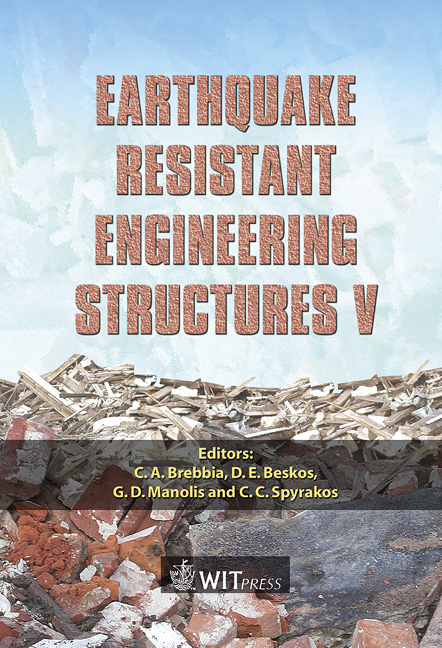Static Cyclic Tests On URM Walls After Retrofitting With Hardwires And GFRP
Price
Free (open access)
Transaction
Volume
81
Pages
11
Published
2005
Size
1,067 kb
Paper DOI
10.2495/ERES050571
Copyright
WIT Press
Author(s)
M. ElGawady, P. Lestuzzi & M. Badoux
Abstract
This paper presents part of the static cyclic tests carried out in Switzerland. The test specimens were half-scale unreinforced masonry (URM) walls built using hollow clay brick and weak mortar. The specimens had an effective moment to shear ratio of 0.67. One of the specimens was a reference specimen while the other two specimens were retrofitted specimens. The specimens were retrofitted using either hardwire or glass fiber reinforced polymers GFRP. The specimens were subjected to a series of force and displacement control test runs. The test shows that the composites improve the cracking and ultimate load of the retrofitted specimen as much as three times the original cracking and ultimate load. In addition, there was no yielding of the hardwire during failure. Keywords: seismic, in-plane, composites, retrofitting. 1 Introduction Recent earthquakes have shown the vulnerability of URM buildings. Modern fiber reinforced polymers (FRP) materials offer promising retrofitting possibilities for masonry buildings. Several researchers (e.g. ElGawady et al. [1, 2], Ehsani et al. [3], and Schwegler [4]) explored the improvement in the out-of- plane and in-plane resistance of URM walls retrofitted with FRP. 2 Experimental program The experimental results presented here are part of an ongoing static cyclic testing program. This paper reports on the following tests:
Keywords
seismic, in-plane, composites, retrofitting.





